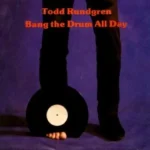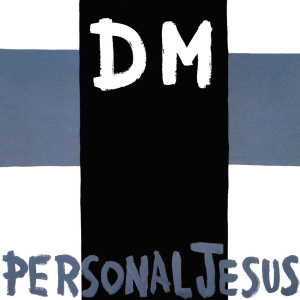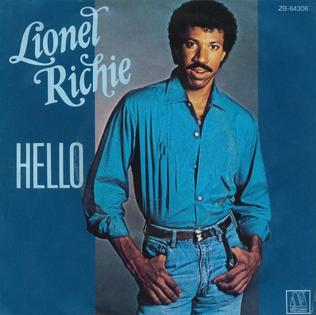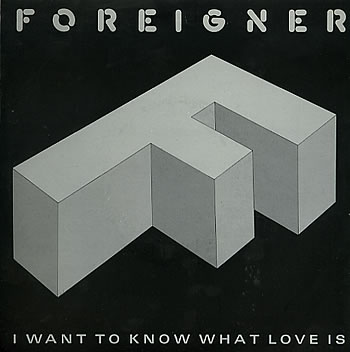 “Bang the Drum All Day” by Todd Rundgren is one of those songs that manages to be both deceptively simple and endlessly enduring. Released in 1983 on his album The Ever Popular Tortured Artist Effect, it became one of Rundgren’s signature tracks despite sounding almost nothing like the progressive, experimental, or pop-oriented work that had defined much of his career up to that point. The track is playful, irreverent, and celebratory—a song about rejecting the grind of work, school, and responsibility in favor of unrestrained joy, symbolized by the primal act of banging on a drum. Over time, it has taken on a life of its own, becoming an anthem of rebellion against drudgery, a sports stadium favorite, a pop culture staple, and a song that embodies Rundgren’s eclectic spirit. To understand “Bang the Drum All Day” is to understand not just a quirky pop song, but also Rundgren’s career-long willingness to defy expectations and embrace whimsy alongside brilliance.
“Bang the Drum All Day” by Todd Rundgren is one of those songs that manages to be both deceptively simple and endlessly enduring. Released in 1983 on his album The Ever Popular Tortured Artist Effect, it became one of Rundgren’s signature tracks despite sounding almost nothing like the progressive, experimental, or pop-oriented work that had defined much of his career up to that point. The track is playful, irreverent, and celebratory—a song about rejecting the grind of work, school, and responsibility in favor of unrestrained joy, symbolized by the primal act of banging on a drum. Over time, it has taken on a life of its own, becoming an anthem of rebellion against drudgery, a sports stadium favorite, a pop culture staple, and a song that embodies Rundgren’s eclectic spirit. To understand “Bang the Drum All Day” is to understand not just a quirky pop song, but also Rundgren’s career-long willingness to defy expectations and embrace whimsy alongside brilliance.
Todd Rundgren, by the time he recorded The Ever Popular Tortured Artist Effect, was already one of rock’s most idiosyncratic figures. He had achieved commercial success in the early 1970s with hits like “Hello It’s Me” and “I Saw the Light,” both smooth, melodic pop songs that showed his gift for songwriting and production. He had also ventured deep into progressive rock with his band Utopia, releasing elaborate concept albums and exploring the boundaries of rock, electronic, and avant-garde music. He was a prolific producer as well, shaping the sound of other artists like Meat Loaf’s Bat Out of Hell, Badfinger, and XTC. By 1983, he had nothing left to prove in terms of musical credibility. That freedom allowed him to write and record “Bang the Drum All Day,” which he himself has described in interviews as something he didn’t intend to become a serious single. In fact, it was almost a throwaway track, something lighthearted and silly added to balance the album’s more complex moments. Yet ironically, it became one of his best-known songs, loved by audiences who may have never explored the rest of his rich catalog.
The brilliance of “Bang the Drum All Day” lies in its universality. The lyrics are as straightforward as pop gets: a narrator declaring they don’t want to work, don’t want to play, don’t want to do anything except bang on the drum all day. It’s childlike in its simplicity but profound in the way it taps into a universal feeling. Everyone, at some point, has wanted to throw off the weight of responsibilities, skip out on obligations, and just lose themselves in something fun. The drum becomes a metaphor for joy, freedom, and rebellion. Rundgren captures that mood perfectly in a way that resonates across generations, cultures, and contexts.
Musically, the track is built around a catchy, almost primal rhythm. It opens with a distinctive reggae-inspired groove before shifting into its upbeat, celebratory chorus. The production is bright, crisp, and intentionally unpolished compared to Rundgren’s more meticulous work, giving it a spontaneous energy that matches the lyrics’ carefree attitude. Rundgren, who famously played nearly every instrument on many of his albums, handled the instrumentation here as well, layering percussion, guitar, and synths into a track that feels loose and joyous. Unlike some of his more experimental compositions, “Bang the Drum All Day” is instantly accessible, built to be chanted, danced to, and blasted loudly.
When it was released as a single, it didn’t become a massive chart-topping hit in the way some of Rundgren’s earlier songs had. It reached a modest audience initially, gaining more of a cult following than mainstream saturation. But its longevity has proven remarkable. Over time, “Bang the Drum All Day” has grown far beyond its original release, becoming one of the most recognizable anthems of workplace rebellion. Radio DJs began using it as a Friday or weekend kick-off song, often spinning it to signal the end of the workweek. Office workers and students alike adopted it as a kind of unofficial anthem of laziness, joy, and escape.
Sports culture has also played a massive role in the song’s enduring popularity. “Bang the Drum All Day” became a staple in stadiums, often played after touchdowns in football games or after big scoring moments in baseball and hockey. The Green Bay Packers famously began using it at Lambeau Field after touchdowns, cementing its status as a sports anthem. The combination of its infectious rhythm, easily chantable chorus, and lighthearted irreverence made it perfect for energizing crowds. Fans embraced it as a song of celebration, forever linking it to moments of communal joy and triumph.
Pop culture also embraced the track in countless other ways. It has appeared in films, TV shows, and commercials, usually as a shorthand for carefree rebellion. From being used in car commercials to comedies, the song’s message of ditching responsibility and embracing fun has made it endlessly adaptable. Its use in media only reinforced its staying power, introducing it to younger audiences who may have never heard of Rundgren otherwise. Every placement helped solidify it as more than just a song from 1983—it became a permanent fixture in the broader soundtrack of American pop culture.
One of the fascinating aspects of “Bang the Drum All Day” is how it fits into Rundgren’s career as a whole. Known for his artistic ambition, complex compositions, and deep involvement in music production, Rundgren is often seen as a “musician’s musician.” His catalog is full of intricate, layered works that reward close listening. Yet this track is almost the polar opposite: simple, playful, and lacking in pretension. For some critics, that made it feel frivolous, almost like a novelty song. But Rundgren himself seemed to revel in that contradiction. He once joked that he couldn’t escape the song even if he wanted to, as audiences continued to demand it at shows, long after its initial release. In a way, it represents the duality of Rundgren: the tortured artist and the playful prankster. He could be as serious and ambitious as any artist of his generation, but he also had no problem writing something as joyfully silly as “Bang the Drum All Day.”
The song’s simplicity is also its strength. While some tracks from the 1980s sound hopelessly dated due to overproduction or reliance on trends, “Bang the Drum All Day” has a timeless quality. Its core idea—rejecting work in favor of fun—is universal, and the instrumentation, while rooted in its time, still feels vibrant. It’s one of those songs that immediately lifts moods, the kind of track that can turn a bad day around or spark spontaneous dancing. That emotional resonance explains why it continues to find new audiences decade after decade.
Another interesting dimension to the song is its relationship to labor and culture. While on the surface it’s a silly party song, it also connects to deeper themes of dissatisfaction with work and modern life. The 1980s were a period of significant economic shifts, with workplace stress, corporate culture, and the grind of daily labor becoming more pronounced in popular consciousness. “Bang the Drum All Day” provided a cathartic release—a way of laughing at the seriousness of work and reminding listeners that life is meant to be enjoyed. While Rundgren likely didn’t intend it as political, the song resonates with anti-work sentiments that continue to echo in culture today, especially in moments where people feel overburdened by responsibilities. In the modern era, with conversations about work-life balance and burnout at the forefront, the song feels as relevant as ever.
The way audiences continue to interact with “Bang the Drum All Day” is proof of its adaptability. Kids love it because of its silliness and infectious rhythm. Adults love it because it speaks to the fantasy of escaping obligations. Sports fans love it because it has become a soundtrack to celebration. It exists simultaneously as a novelty, an anthem, and a cultural meme, with each context adding to its legacy. Very few songs can inhabit so many spaces at once without losing their charm, but Rundgren’s track manages it effortlessly.
In Rundgren’s live performances, “Bang the Drum All Day” has become both a blessing and a burden. Fans often demand it, and while Rundgren has a vast catalog of serious, complex work he is proud of, he can’t escape the song’s shadow. He has admitted with some amusement that it is one of his most requested songs, and audiences light up whenever he plays it. That duality—between his ambitious artistry and his fun-loving side—is part of what makes Rundgren such a fascinating figure. He doesn’t shy away from the song’s silliness, instead embracing it as part of his wide-ranging identity as a musician.
Looking at its cultural footprint today, “Bang the Drum All Day” has become much bigger than Todd Rundgren himself. Many people know the song but don’t know who wrote it, associating it instead with sports games, TV ads, or radio stations. That’s the fate of many ubiquitous pop culture anthems—they transcend their creators. But for those who do know Rundgren, the song offers an entry point into his broader body of work, which remains one of the most eclectic and rewarding in rock history. It’s a reminder that even great artists sometimes strike gold with something simple, spontaneous, and fun.
As decades pass, the song’s message feels more and more timeless. In a world where work pressures are constant, where technology keeps people tethered to responsibilities even outside the office, “Bang the Drum All Day” feels almost prophetic. It captures the universal fantasy of throwing it all away and just doing something joyous for the sake of joy itself. There’s a reason it still gets blasted on Fridays to mark the weekend, still gets requested at parties, and still makes stadiums erupt with cheers. Its magic lies in its ability to tap into something primal, playful, and enduring.
Todd Rundgren may have written the song as a lighthearted aside, but “Bang the Drum All Day” has proven to be one of his most lasting contributions to music culture. It’s not a masterpiece in the traditional sense. It’s not intricate, deeply layered, or profoundly innovative. But it doesn’t need to be. Its brilliance is in its simplicity, in its ability to speak to anyone, anywhere, at any time. It’s a song about freedom, joy, and rebellion against the mundane. It’s a reminder that sometimes music’s greatest gift is not in its complexity but in its ability to make us smile, dance, and forget our troubles for a while.
Four decades later, the sound of that chorus still brings instant delight: “I don’t want to work, I just want to bang on the drum all day.” It’s a line that never seems to lose its power, no matter how many times it’s sung, shouted, or chanted. That’s the true measure of a classic—when a song transcends its moment and becomes woven into the fabric of everyday life. Todd Rundgren’s quirky anthem has done just that, and its beat will keep pounding for generations to come.


